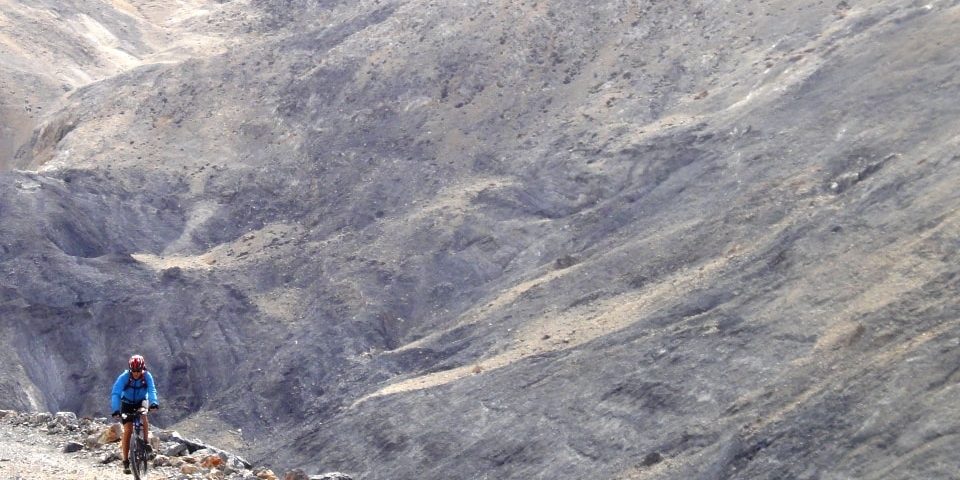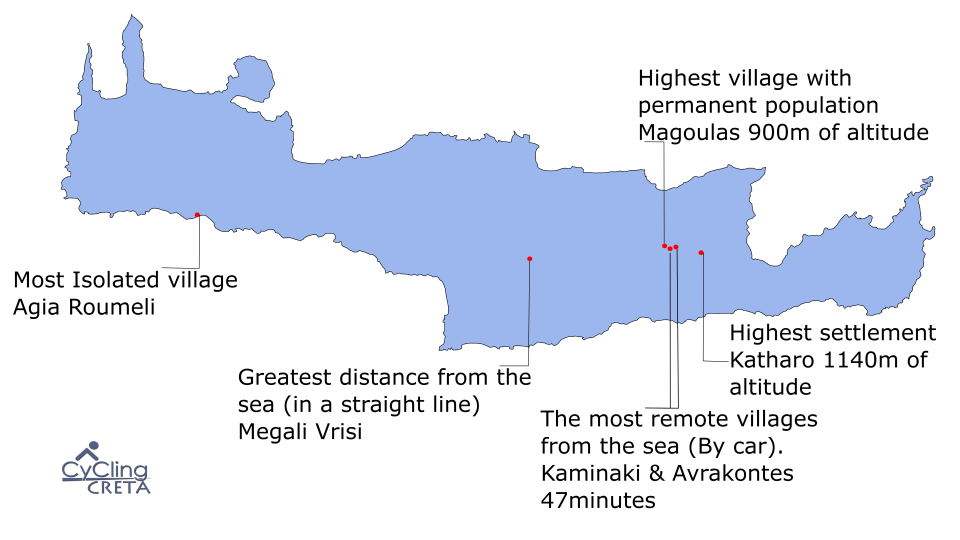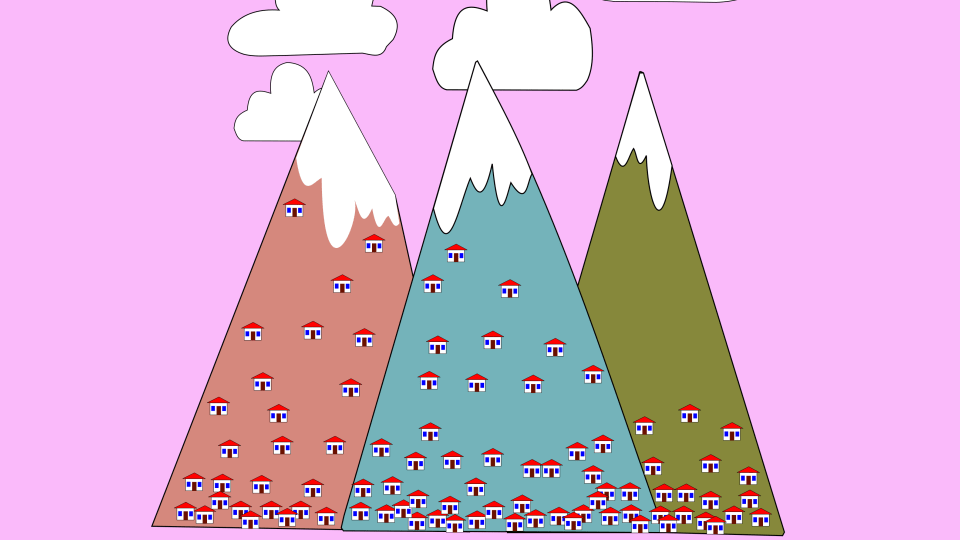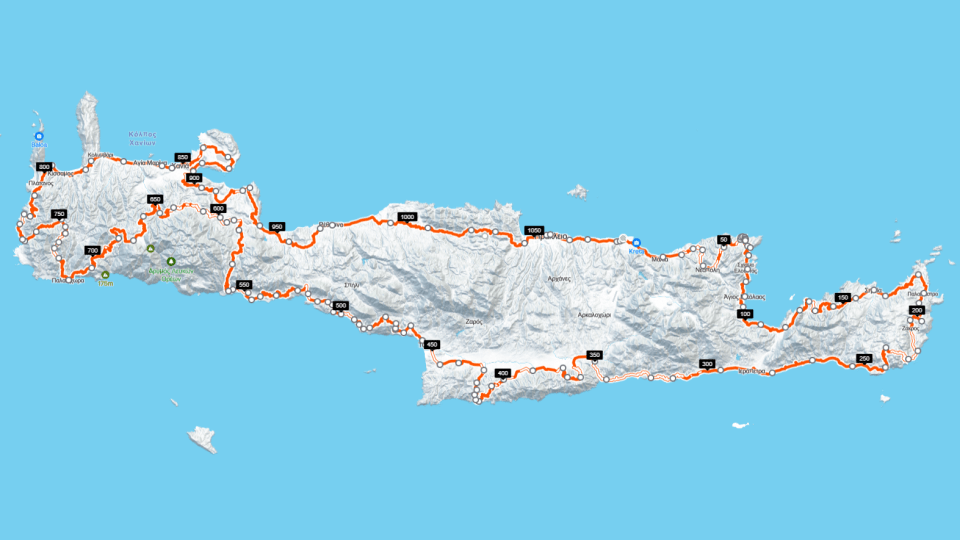


9 things you must do when visiting Crete
1 February 2018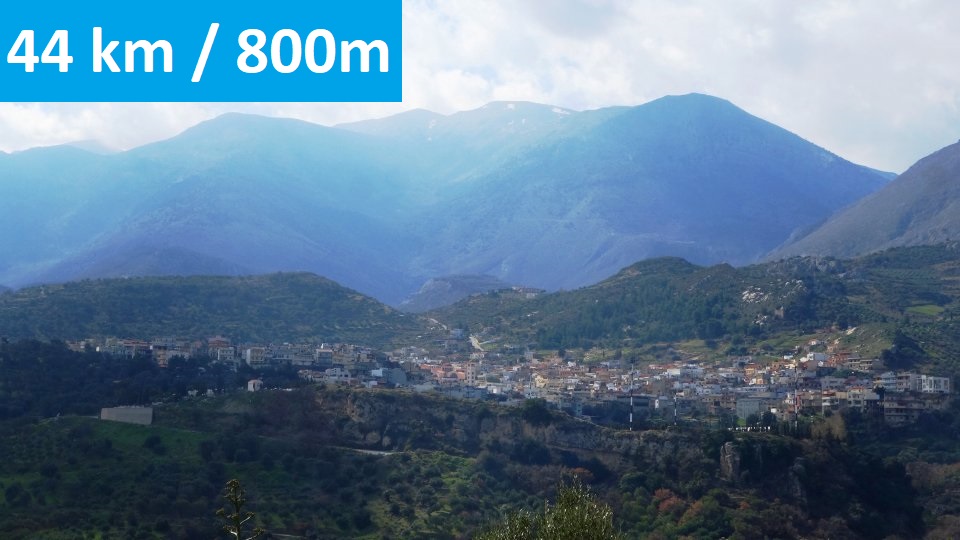


Malvicino
9 February 2018The landscapes of Crete
Nowhere in Crete the landscape is the same, it’s always changing, but at the same time it’s always repeated. It changes as we move from North to South and from East to West. Changes as we go up from the lowlands to the mountains and as the seasons change. This great variety of landscapes is repeated throughout the island with many variations. Fertile valleys alternate with deep inaccessible gorges or surrounded by rugged bare rocks. The dry, during summer months, pastures greens and fills with flowers in spring. The arctic landscape of the high mountains alternates with the African southern coast. The dense high forests alternate with low windswept brushwood and crops.
How this multiform landscape created? It is the result of the power of weather elements water, sun and wind that carve and scatter the ground, the tectonic forces that press, compress, lift or sink, but also the humans who conquered and tamed this unique place.Cypress forests


Cypress forest. Vatoudiaris - Apokorona northern white mountains.
Crete is the only place whith cypress forests. Cypressess occupy the 5,14% of Crete and grow everywhere in the island from sea level up to the high mountains. Big forests there are in Samaria canyon, North slopes of White mountains (Vryses) and Kritsa (Dikti mountains).
Oak Forests


Oak trees. Armenoi village Rethymno.
Quercus ithaburensis (OaK),
Quercus coccifera (Kermes Oak),
Quercus ilax (Holm Oak), Prinos or Drys for the locals are very common in Crete and give their name to many Cretan villages. Rouvas and kristas are the most important Prinos forest in Crete (Kermes Oak forests).
Pine forests


Amiras pine forest. Dikti mountains.
Big pine woods are found at the the south slopes of Dikti, Asterousia, Psiloritis, Thriti and White mountains. Selakano the biggest forest in Crete is a Pine forest.
Pine trees are used for Honey production.Plane trees
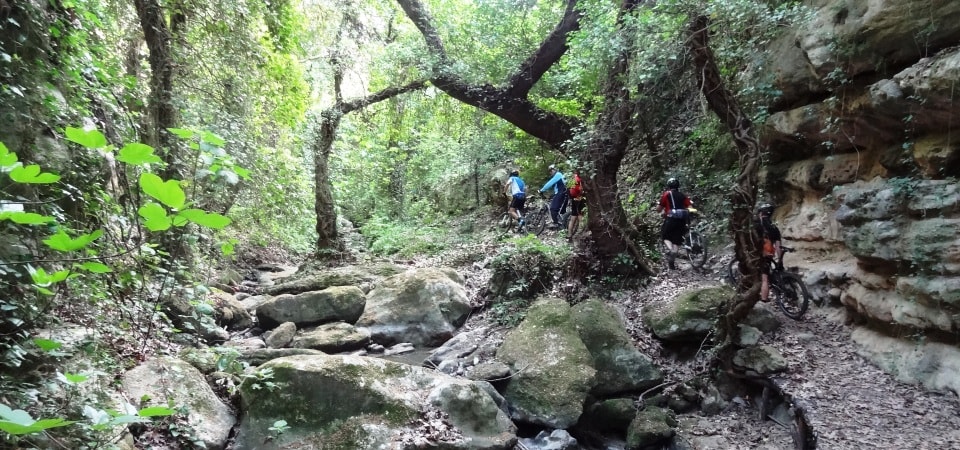

Plane trees inside Kounavoi Canyon.
The Platanus Orientalis (Plane tree) is found naturally everywhere in Crete that there is water but it is quite capable of survival in dry soils.
Because of its enormous spreading crown it is planted at almost every village square for the shade and coolness it provides during summer months. In Crete there is also the only evergreen plane tree. The rare endemic variety Platanus orientalis var. Cretica.Chest nut forests
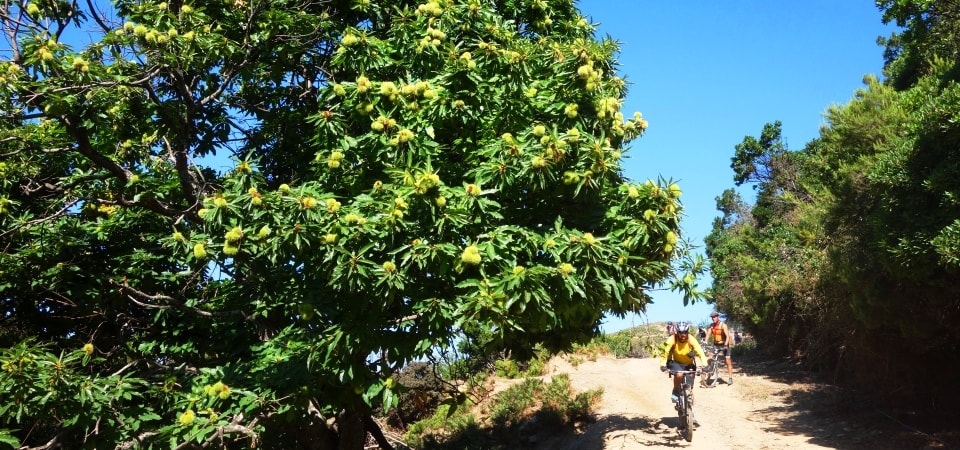

Chest nut forest. Prasses of Chania
Chestnuts forest occupy the 1,31% of Crete island and grows only on the mountains of west Crete.
Palm forests
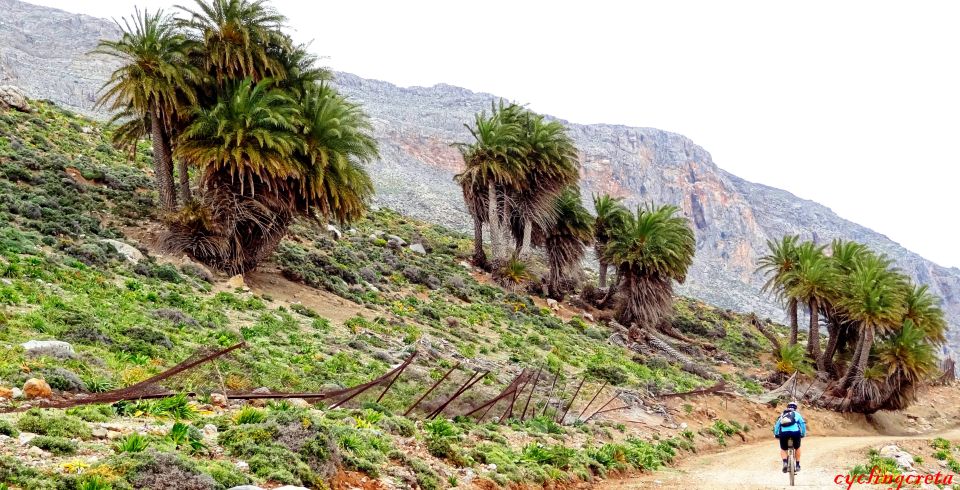

Agios Nikitas palma forest. Asterousia Mountains.
The Phoenix Theophrasti, also known as Cretan palm, is a rare endemic species of the Aegean and found throughout Crete. It thrives in sandy wet valleys or rocky areas close to sea.
Vai (east Crete) is the only big palm forest in Europe. Other smaller palm forests are Agios Nikitas and Martsalo (Asterousia mountains), Preveli and Souda (South of Rethymno).Phrygana - Garrigues


Frygana. Atsipades of Rethymno.
Maybe the most common landscape in Crete. Phrygana that grow in poor, infertile and degraded by fire or grazing lands have found in Crete the perfect home.
Coridothymus capitatus (thymε), Cistus creticus, Cistus salviifolius, Hypericum empetrifolium, Salvia triloba, Salvia fruticosa (sage), Sarcopoterium spinosum, Erica manipuliflora, Calicotome villosa, Asparagus acutifolius, Ballota acetabulosa, Asphodelus aestivus, Globularia alypum occupy the 1/3 of the island.African landscape


Tripiti. Asterousia mountains.
The dry and barren landscape of the low-altitude Mountains is characteristic of many areas of southern and eastern Crete. The dry and warm-resistant phrygana are ideal for the regions of Crete with African climate.
Phryganas exhibit seasonal dimorphism that makes them the best defence against desertification. The big winter leaves are turned into small and fluffy leaves in the summer to save water. At south Crete the shallows stay all year round.Salt sprayed coastal cliffs


Seaside rocks. Kalamaki beach - Komos.
Although the coastline of Crete is 1046 kilometres there are more rocky, rough cliffs and difficult to access beaches than endless sandy beaches.
The locals found these seaside rocks very useful as they carved salt pans to collect their salt.
Coastal sand vegetation


Komos Crete.
Only a few brave plants are the inhabitants of the narrow sandy and salty area next to the sea. Here growns and the most beautiful flower of Crete; The lily of Minoas (Pancratium maritimum) the white flower that was painted on the frescos of Knossos and Santorini.
Deep canyons


Deliana - Mesavlia canyon. Chania region.
In Crete there are more than 300 canyons. Some are short some other are enormous. Some are easy to pass and some other are pathlessness. Some are full of rocks and some other full of Trees.
Samaria canyon at the White Mountains is Europe’s biggest canyon.Rivers


Platys river. Agia Galini.
The rivers of Crete have water only in winter. During summer months are dry. The rest of the year just a little bit of water flows on the river bed but they can be really dangerous after a heavy rain.
Almyros river of Heraklio, Almyros river of Agios Nikolaos and Almyros river of Chania that spring from the eastern slopes of Psiloritis, Dikti and White mountains have semi salted water all year round.Wetlands and lakes


Omalos of Viannos plateau.
The inland wetlands of Crete cover the 2,9% of the total surface of the island. Except Kournas lake (eastern of the Lefka Ori) and Agias lake (wester of the Lefka Ori) there are no other natural lakes. Water ponds like Omalos of Viannos keep their water only during winter months.
Vertical cliffs


Agios Savas canyon. Asterousia mountains.
The same powers that created the canyons of Crete push all of these rocks out of the ground to build amazing formations that seems like they hang from the sky like and can be found everywhere in Crete.
Pastures


Tripita - Vigla. Pompia.
Every piece of land that is not cultivated is a pasture. The wild deer was replaced from the sheep and the goats when humans conquer the island. Grazing even plants at the most hard to reach places they eternally transform the landscape of the island.
Arable land


Lasithi plateau Crete.
In the past people used to cultivate even the smallest piece of land on the mountains that could keep some soil for their wheat or animals food. Now the arable land is limited only close to the settlements and the small hills around them, but the old stone walls on the big mountains reminds us that once upon the time, before bulldozers cut the mountains to built roads, old Cretans had already tamed this wild place.
Big rocks and stones


Koumasa. Asterousia mountains.
This is the main characteristic of Crete no matter the place the rocks and the stones are everywhere not only on the mountains. They grow like plants even at the flat lands and look like a God put them there by hand.
The desert of the high mounatins
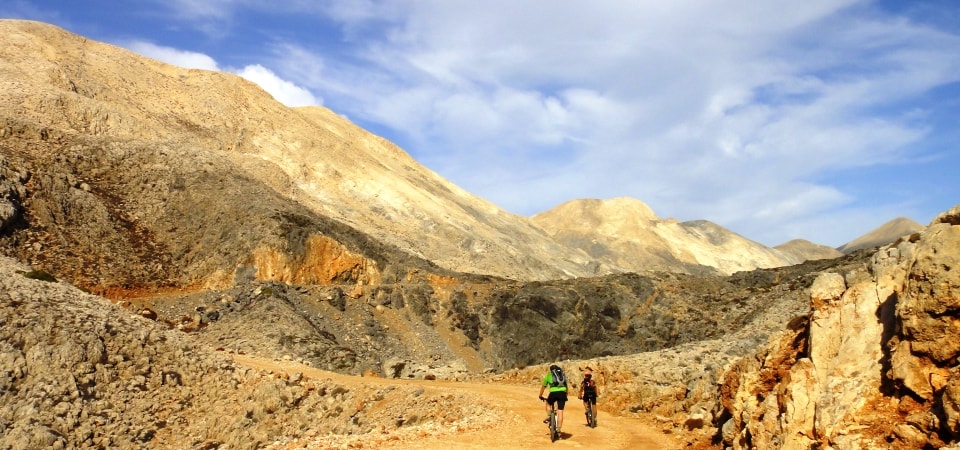

Amoutsares - Lefka Ori.
In Crete the limit of the forest in the mountain zone is the 1650 meters. For the few organisms that survive from here and higher, the climatic conditions are very tough. During the winter the animals and plants find under the snow layer protection from extreme cold. In the summer, the temperature difference between shadows and sunny surfaces reaches 40 degrees Celcius.
Moonlike landscape


Mavra Gremna. Lefka Ori.
The most rough landscape of Crete is found on the white mountains 2000 meters above sea level. Here the snow remains more than 6 months per year. In the summer when the strong sun melts the snow appear the grey stones and the endless scree, during the short summer all the water is disappeared.
But even at this hard to live landscape there is life. Endemic plants of the Lefka Ori are able to find any amount of humidity and soil and grow at this deserted place.Scree & Landslides


Gergianoi Detes. Gergeri.
scree are found on all mountains of Crete. Every year lots of roads are destroyed because of the and the landslides. The solution for this are the wide roads that Cretans love to construct on the mountains.
Olives - Olives - Olives


From Sivas to Matala olive forest.
It is believed that the systematic cultivation of olives initiated in Crete thousands of years before and since then Cretans plant olive trees everywhere.
With more than 30 million trees, olive groves is the most common landscape of the cultivated areas of Crete from sea level up to 800meters of altitude.Vine yards
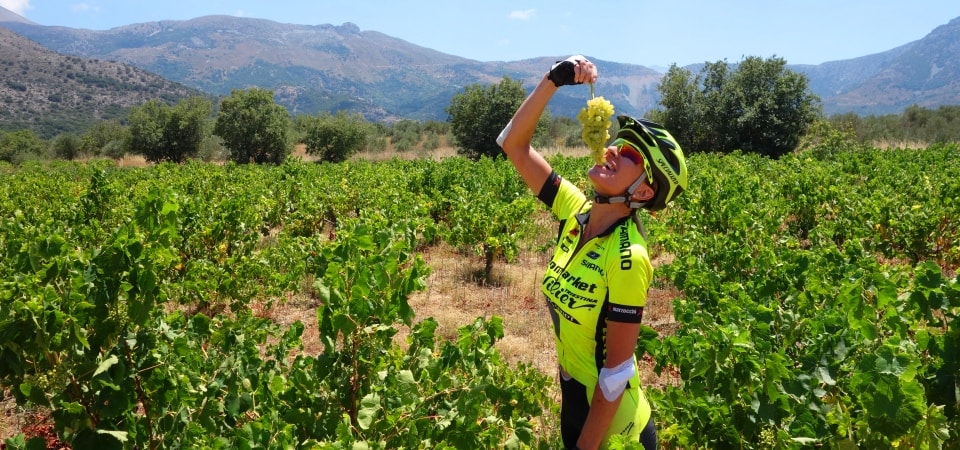

Grapes harvesting. Mochos village.
Although raisins are not as famous as it was 30 years before and lots of vine yards was replaces form olives there are still areas that grapes and wine are the main product of the local economy.
The most famous wine areas are located at central Crete; Archanes, Peza, Dafnes, Foinikia, Profitis Ilias….Green houses


Green houses. Arvi, south Dikti.
Since 1966, when the first greenhouse was constructed in Ierapetra by the Dutch agronomist Paul Herman Felix Kuijpers, the landscape and the life of the relatively poorer cities of southern Crete have changed dramatically.
Since then all the major cities of south Crete Ierapetra, Paleochora, Tympaki, Makri Yialos have been largely covered with nylon. Only in Ierapetra there are more than 12,000 acres of greenhousesAnnual cultivations and vegetables
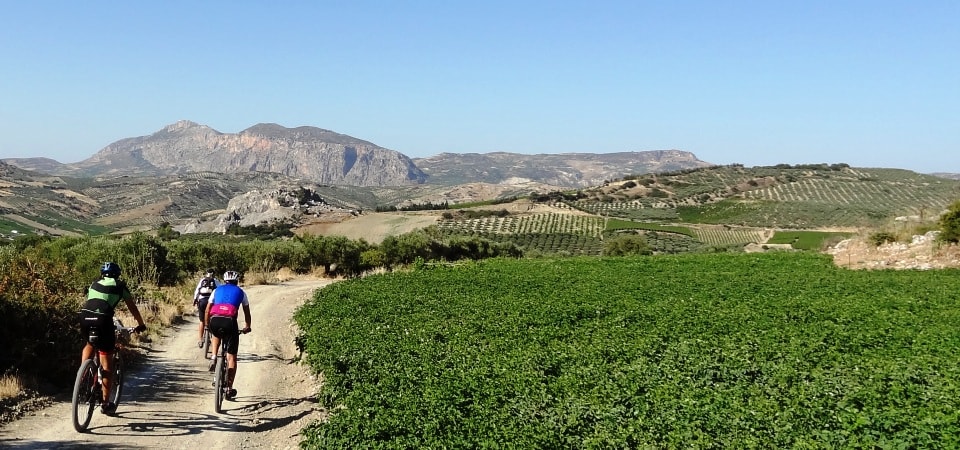

Potatos. Douli village, Monofatsi.

